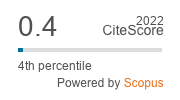Forensic implications of the seasonal changes in the rate of development of blowfly, Chrysomya megacephala (Fabricius) (Diptera, Calliphoridae)
DOI:
https://doi.org/10.33307/entomon.v47i4.790Abstract
Studies on the development rate of Chrysomya megacephala (Fabricius) suggested that the blowfly as a significant candidate for forensic investigations. Under natural ambient conditions development rate of C. megacephala in monsoon, winter and summer seasons indicated significant differences among seasons. The larvae began pupation at 92nd h in summer, 157th h in the monsoon season and 191st h in winter. Rapid larval growth in terms of length was observed in summer. During summer, the length of the larvae increased to a maximum of 13.9 mm at 54th h. Time taken for the emergence of the adult fly was 164, 249 and 311h in summer, monsoon and winter seasons respectively. Life table studies were conducted to assess the percentage survival and mortality by recording the survival rate of different development stages. Molecular diagnosis of species was done using COI gene. The analysis included molecular sequences of other samples of the same species from different regions of India. The neighborjoining method allowed us to identify the species at molecular level with precision and accuracy.


